#subterranean fantasy
Explore tagged Tumblr posts
Text
I’m still watching Mythkeeper’s Pathfinder lore channel, and I saw his newest video come up today and about wriggled in excitement. Because it’s on the Xiomorns, and next week’s video will be on the Darklands, and I really love subterranean fantasy. Ahem. As people possibly know.
The Xiomorns are the ancient insectile elemental race of Vault Builders and Vault Keepers that built the massive Vaults of Orv, the insanely large nation-sized caverns in the deepest depths of the Darklands that host entire mini-biomes in vaults thousands of feet high. They are fucking cool. Way back in the primordial ages of Golarion the Xiomorns went to war with the Alghollthu (aboleths) over the depths of the planet, and lost, and so mostly abandoned Golarion and their vaults to go back to the Plane of Earth and/or other planets they’d hollowed out elsewhere.
So they’re an ancient insectoid progenitor race of hollow earth world builders, and back in primordial times they went to war with the totalitarian psychic fish people for ownership of the world. Pathfinder has such interesting science fiction-slash-conspiracy theory-slash-lovecraftian influences sometimes. Anything surrounding the Alghollthu has that tinge to it. There’s a definite thread through the past ages of the world, the Xiomorn vs the Alghollthu, followed by the serpent folk empires vs the cyclopean Ghol-Gan and the Atlanteans, the Alghollthu first raising the Azlanti and then destroying them in a pyrrhic victory that damn near destroyed the world. Pathfinder has borrowed liberally from a lot of pulp fantasy and weird fiction, and I’m fine with it. Heh. There’s a lot of things like HP Lovecraft, and Pellucidar, and Journey to the Centre of the Earth in here.
For bonus lovecraftian points, the Xiomorn were lured away from their creator elemental deity Sairazul by the manipulations of an evil elemental deity Ayrzul, who stole part of their divine essence by tricking them into sacrifice it to him. How did he do this? He showed them a (possibly genuine) vision of the extinct of their race at the hands of the lovecraftian yithians, who will bodyswap with them at the moment of the yithians’ own destruction, leaving the xiomorns to die while the yithians take their immortal bodies for themselves. To avoid this, Ayrzul convinces them to sacrifice the immortality of half their race to him, creating the divide between the immortal Vault Builders and the mortal Vault Keepers. And the xiomorns haven’t yet realised his manipulations, at least not on a species-wide level, so a lot of them are still quite devoted to Ayrzul.
Golarion’s mythic level history and prehistory is really fascinating, and it’s fun to pick out some of the influences there.
But, to go back to the Xiomorns, I’m so looking forward to a Darklands deep dive video. The Vaults of Orv are fascinating. Whole cavern-worlds down at the deepest parts of the Darklands, built by a lost alien race, and left to develop on their own in the aftermath, with only a few lone Vault Keepers remaining to try and steer them. Taken over, in some cases, by the enemies of their builders. There’s a massive subterranean sea down there. A crystal jungle. A vault built around a lake of alien black blood. An irradiated black sand desert. Which is irradiated because the damned human god Aroden stolen five of its six artificial suns and buggered off, leaving the vault to wither and irradiate from a mini paradise to its current irradiated state. Because humans are good like that. Can’t trust ‘em for nuthin’. Heh.
This whole area of Pathfinder lore is fantastic to me. The Darklands are just cool.
#pathfinder#lore#golarion#darklands#orv#xiomorns#pulp fantasy#weird fiction#subterranean fantasy#hollow earth
7 notes
·
View notes
Text

Fire & Blood Cover Art by Gary Gianni
#Game of Thrones#A Song of Ice and Fire#Fire & Blood#Covers#Cover Art#Subterranean Press#Fantasy#Art#Dragon#Gary Gianni
80 notes
·
View notes
Text
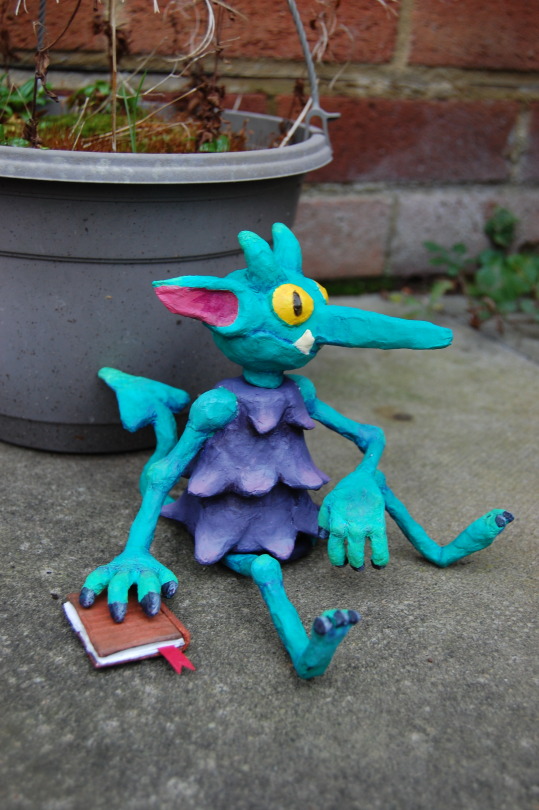
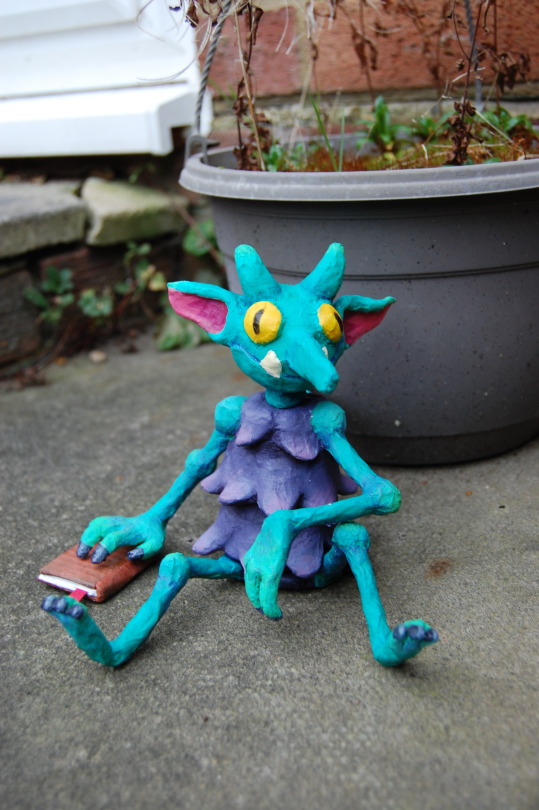

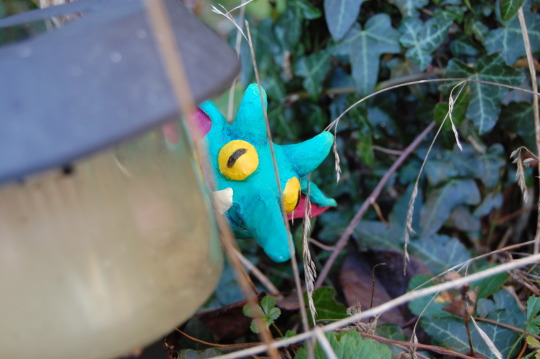

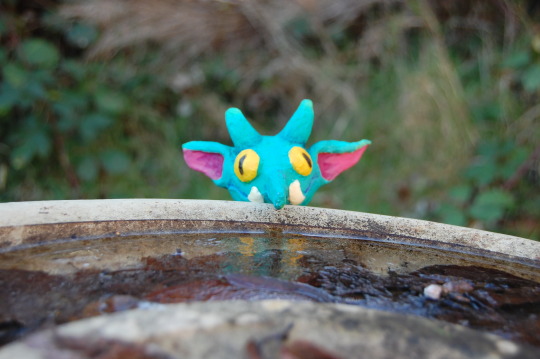
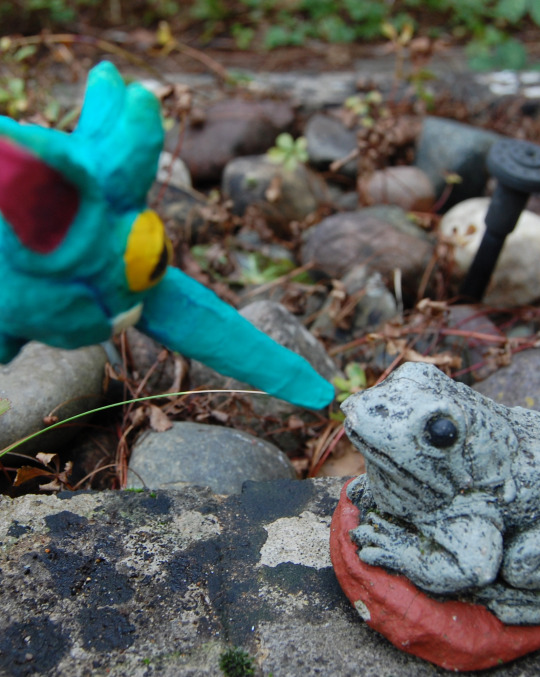
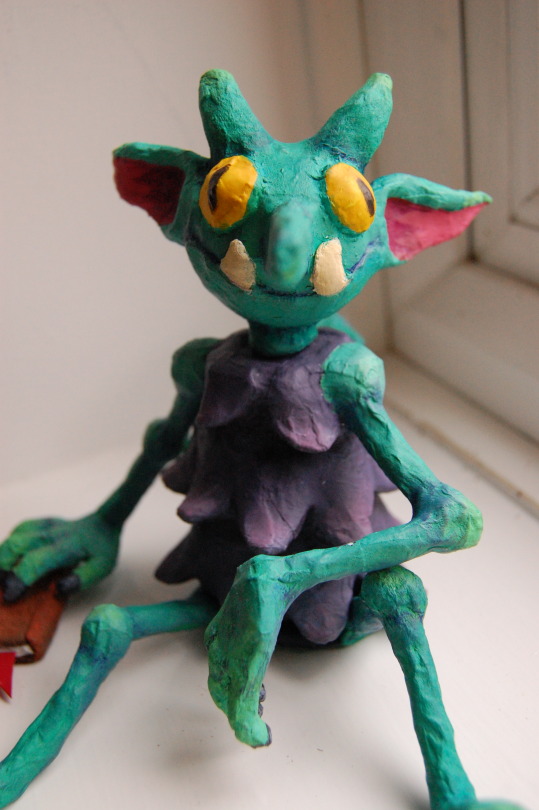
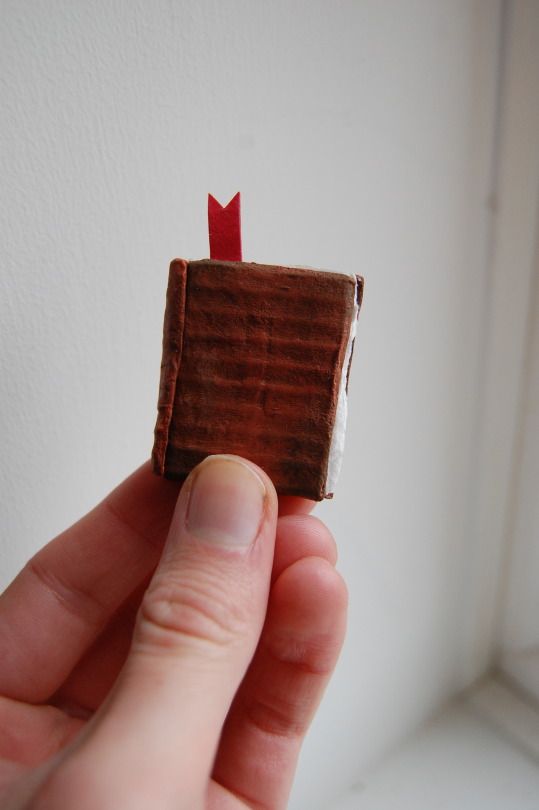
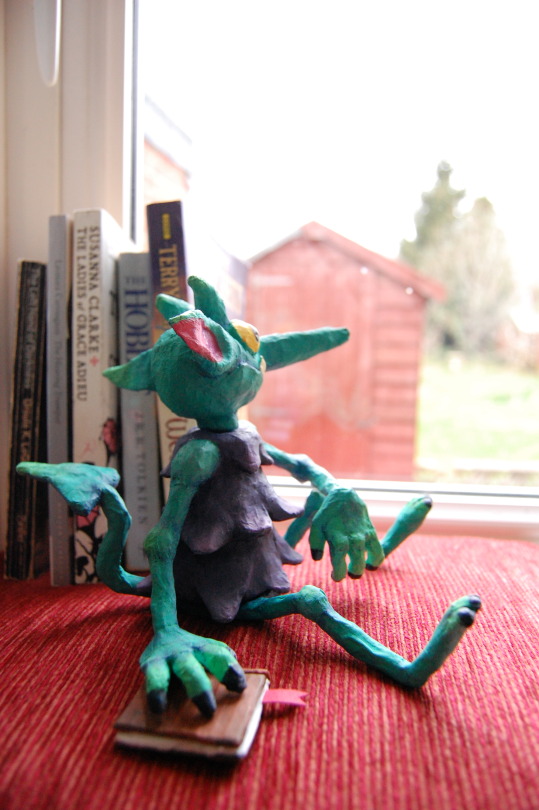
Found a little Goblin in the back garden
#illustration#sculpture#paper mache#goblin#fantasy art#fantasy creature#miniature art#little guys#books#A smart boy!#A handsome boy!#And that book he's reading?#'The Junior Guide to Subterranean Demonology' (Travel Edition) by famed Goblin author Garbo Gagrene-Smith
218 notes
·
View notes
Text

Wild Pixies of the subterranean kingdom of Korth by Geezer-gun
#my edit#b&w#wild pixies of the subterranean kingdom of korth#geezer-gun#black and white#monochrome#dark art#dark fantasy#pixies#fairy#digital art
38 notes
·
View notes
Text

Orin Kaenbyou, Hell's traffic accident
#art#fantasy art#posca#touhou fanart#touhou project#touhou#rin kaenbyou#subterranean animism#touhou orin
41 notes
·
View notes
Text

'The Daughter Of Doctor Moreau' by Marcela Bolivar.
Cover art for the Subterranean Press edition of the novel, 'The Daughter Of Doctor Moreau', written by Silvia Moreno-Garcia.
#Art Of The Day#Art#AOTD#Marcela Bolivar#The Daughter Of Doctor Moreau#Silvia Moreno Garcia#Subterranean Press#Books#Book Cover#Book Cover Art#Cover Art#Fantasy Art#Fantastical Art#Imaginative Realism
51 notes
·
View notes
Text
A Quick Biological Primer on Subterraneum Citizens
(From the archives again, this time more a lorefile than a story. But I would prefer to rescue this one quickly for the sake of clarity in the future. I will be linking back here often.)
So, if you've been following me for any length of time, been keeping up with certain writing prompt accounts, or generally just stumbled onto the things I've been writing that have the Subterraneum_(Yutzen), you may have a variety of questions. Mostly ones like "the fuck's an Ifchi".
In the interest of giving folks and also myself a reference for the more appearance-based or species-related questions, and keeping track of general biology and capacities, here's a quick (by my standards) primer on each of the Subterraneum's major sentient species. Arranged in no particular order, with names (formal and very informal), basic measures and some elaboration on their looks, anatomy and more esoteric capacities, if any are involved. I will get to elaboration on their nations' actual setups on some other primer in the future, hopefully.
Included is also a quick, but probably necessary introduction on the "magic system" (for lack of better terms) in the Subterraneum, intentionally vague as it may be. The stuff goes deep enough to be biologically important after all.
Anyhow, here goes, hope it helps! And I apologize if any numbers seem ridiculous, which they'll probably be. Feel free to correct me but also physics are a little weird down there.
A NOTE ON AFFINITIES AND AMBIENT ENERGIES: It’s not just creatures that enter the Subterraneum through its various Exits. Ambient energies, background fields and other phenomena have been leaking through the rock for centuries on end, and the ever-present Radiance has blended them together over time into an uneven backdrop of strange, unrelated and even contradictory essences. The residents of the caverns have been affected by these background fields, and have changed to attune to and manipulate them in turn, with varying amounts of success.
The so-called “elemental” energies tend to manifest strongly and directly, by infused terrains and by the various species alike; whether this is part of how the elements work or an interaction (if not direct “preference”) from the Radiance it’s mixed with is unknown. Nevertheless, each of the usual species can often manifest such energies in their own unique ways, and individuals often show shockingly different affinities, even within the same species. Affinities with the Radiance itself vary similarly, though not one species can be said to be untouched by it.
It bears mentioning that the Radiance often interferes with other energies even in the midst of manipulation, adding a dose of unpredictability to the results. Those that can harness this, and tap into the Radiance’s unique metaphysical properties, can reach what is known as one of the ill-understood Sparks: Manipulation of a given element or property that actively, though selectively, breaches specific rules that usually govern it, reaching into metaphysical and sometimes even semantic territory.
Ifchi/Olms
(Singular and Plural are both Ifchi)
Average height: ~1.65 m, with length (including tail) closer to 2.2 m
Average weight: ~75 Kg (including tail)
Description: In truth they’re hardly olms, as most of their traits are closer to axolotls, down to the color variations; it varies on a spectrum, as stories tell of them being two species once that merged together post-arrival with Radiance-granted ease, leaving axolotl traits as dominant - though olm traits have been known to assert themselves in old age. Bipedal, slimy and damp at all times when healthy. They have four-fingered, nail-less hands with little strength, wiry limbs made more for quick movements than strength, and large, paddle-like tails that drag across the ground and let them swim faster than they can run. They have the expected branching frills, growing with age until they sag and droop during older ages; in especially ancient individuals they can even touch the floor. These frills can be a whole spectrum of colors themselves, too, solid but highly variable. The color tends to indicate affinity to ambient fields and energie, for these frills can sense, connect to and work as a focus when manipulating the ambient energies in a given area, Radiant or otherwise. As a result, “spellcasters” are widespread among the species, and their their manipulation of ambient fields oft takes highly recognizable, obvious forms, usually one-off high energy movements that do plenty, but don’t last long.
Ferigozi/Shard Moles
(Singular and plural are both Ferigozi)
Average Height: ~1.4 m
Average Weight: ~70 Kg, mostly (but not entirely) muscle
Description: Stout and bulky creatures on short hindlegs, with powerful forearms and hands bearing oversized claws that can crack solid stone. They have beady eyes and elongated, sensitive snouts that in some strains have extra-sensitive “whiskers” like star-nosed moles do, while others have more proper whiskers running along their snouts. Their eye-sight is lacking even by Subterraneum standards, but they have excellent senses for vibrations in the area, even minor shifts in the breeze. Early in their lifetimes they are almost entirely mole-like, with short, dense and very smooth fur in shades of brown and black; as they age, however, they start developing interlocking chitinous plates like pangolins do, reaching full tesselating coverage around middle-age. Their underbellies always remain furred, however, sometimes necessitating protection. Affinities with ambient energies are limited, and concentrated almost entirely in hands and claws, moving limited amounts of energy with very high precision. Given time and skill, however, Ferigozi can learn to infuse any and all materials with higher concentrations of a chosen ambient energy, with great control over the way they manifest into the material in question; such concentrations can take decades to dilute with a reasonably skilled practitioner.
Bannerbound/Hobgremlins
(Bannerbound works for both singular and plural)
Average height: ~1.7 m, though Bannerbound fluctuations are an exercise on why averages are more useless than you'd think
Average weight: ~70 Kg, with the same warning as above
Description: It’s theorized they started as an abundance of species rather than just one, and that the Subterraneum’s effects merged them into one; with the sheer variance in their forms, this is both likely and near-impossible to actually prove. They are the single most Radiance-susceptible species in the Subterraneum, displaying the changes of excess exposure even during early stages in their lives and going from there even when hardly exposed further. The basic and initial framework would be called humanoid, if the Subterraneum knew humans, ones with glowing eyes all over the spectrum and whose “skin” tends towards single, solid hues; beyond that everything from skin colors and hair to internal anatomy can vary depending on the individual and their affinities. Even things as basic as number and nature of limbs can vary in especially attuned Bannerbound. Their cultural imperative to hide their bodies under multiple layers of garments and secretiveness about their bodies does not help either. This extends into their interaction with ambient energies as well: They are attuned enough to the Radiance that they can infuse specific actions and even creations with the capacity to stretch, and even breach, specific principles and laws. They also have easier access to the Sparks than most other species in the Subterraneum, though their affinities with non-Radiance energies tend to be lower than usual.
Korves/Deep-Crows
(Singular Korve)
Average height: ~2.2 m
Average wingspan: ~4.7 m
Average weight: ~55 Kg
Description: Unquestionable corvids, barely straightened from a theropod stance. Tall, black-feathered and with tough beaks (and necks) that can crack flarewood with a peck. Their eyes are solid in color, often red or yellow, but highly variable in number; anywhere from one to six have been observed, often arranged asymmetrically. By themselves, Korves lack fingers on their wings, with the closest being the dexterous talons they stand on; unusually for the Subterraneum, such growths never came to pass, leaving the limbs only useful for flight and stunning blows. In theory, and in times past, they’ve made do with their legs for tasks requiring fine motor skills, but the species-wide symbiosis with otherwise infectious fungal species in the Valley have given them options: Korves are especially compatible with mycotic infiltration and growths, resisting most harmful effects and taking particular control of the species’ unique structures to the point of commanding its growth and movement. Often inoculated as hatchlings, even the most average Korve can grow finger-like protrusions at the end of their wings that can manipulate objects with a slow, but certain and powerful grip. Other such manipulations have been observed, from carved and immobile growths to whipping tendrils and all in-between, and in rare cases even modification of the symbiote with ambient energies. All this is available to a skilled and willful Korve – so long as their ravenous combined appetite remains sated at all times.
Chelies/Swallows
(Singular Cheli)
Average height: ~1.2 m
Average wingspan: ~2.5 m
Average weight: ~30 Kg
Description: While clearly avians, Chelies are more anthropomorphic (and smaller in all aspects) than the Korves, standing more directly upright. Their wings are thin and thickly-feathered, with flat, claw-like growths on the inside of the wingtip that can grasp like hands would and still fold back into the wing to keep its shape aerodynamic. In addition, they have a similarly bony, though much thicker spur closer to the base of each wing, naturally sharp and often given further edge by the Chelies themselves. Between that, their raptor-like talons and beaks that have lengthened and sharpened with generations, their resemblance to actual swallows nowadays is dubious – though they still retain their red and blue plumage, even thicker and more intensely colorful than ever before. Their need for flight has given them strong, though wiry musculature that grants them speed and agility alike, showing less maneuverability but greater speed than Vezarym in the air. Unlike the Vez – and most Subterraneum species at that – Chelies have excellent eyesight, both close up and at a distance, able to pick out details and movement even in the most spore-choked of caverns. When it comes to ambient energies, they seem entirely unable to affect inorganic materials, or themselves for that matter: Every effect they can induce through their claws and spurs is a “slow burn” applied to other living beings. This is most often applied in their well-known fungal gardens, manipulating otherwise mundane species into something else entirely.
Troxi/Quillskinks
(Singular and plural are both Troxi)
Average height: 1.3 m, with length including tail closer to 2.1 m
Average weight: ~45 kg (including tail)
Description: Skinks is not necessarily the right term, they have too many hints of theropod (and maybe even kobold) in them to truly call them such, but they are reptiles nonetheless. Troxi always have long, whip-like tails that can be shed and regrown, almost always longer than the rest of their bodies, their eyes have invariably slit pupils, and their scales are always in patterns of three different colors. As a norm, their bodies and limbs are toned and slender, with small, yet rough scales. However, this is but a guideline: Variations and mutations – scarce at first, yet reliably transmissible unlike Bannerbound alterations – have made themselves present startlingly quickly, putting the species in biological flux since the establishment of the Republics proper. It’s speculated this is the same process of accelerated “evolution” that affected all previous dwellers, though all projections hint that it’s happening far faster than expected, for unknown and oft-speculated reasons. Whatever the truth may be, Troxi can be seen with different scale patterns and types, spikes along their sides, variable tongues, among many other possibilities. The newest generations even exhibit one uniform change in comparison to their forebears: The emergence of a pattern of colorful feathers along the ridge of their backs, never equal between Troxi yet always present. It’s this newest alteration to the species that’s given them their informal (and sometimes unwanted) nickname.
Shumhaq/Sandhusks
(Singular and plural remain the same)
Average height: ~0.9 m (length including tail is closer to 2.1 m)
Average weight: ~85 kg
Description: Semi-upright arthropods like the rest of their “family”, Shumhaq are closer to arachnids than insects, and closer to scorpions than spiders in that regard; they are the tallest of the Hive members, with the hardest exoskeletons as well. Their framework varies relatively little compared to other Subterraneum species: Six strong, chitinous legs their bulbous, armored abdomens stand on, a scorpion tail that stretches back complete with a sharp stinger, and an upright, armored half with an eighteen-eyed head with grinding chelicerae. Their grasping limbs are “concentric” pincers, with a large, crushing pair surrounding a smaller, more dexterous set of pincers that fit neatly within sockets at the base. Their stingers secrete toxins, with variable but powerful effects that can be affected by the infusion of ambient energies – the only manipulation of such Shumhaq appear capable of – which change how they affect biology and even inanimate materials. Much like other Hive members, they have different castes, but they vary very little in comparison, simply altering their anatomical proportions; mostly, their stingers and their claws tend to be inversely correlated in size. Shumhaq as a whole are, in fact, particularly hardened against any altering and mutating effects, whether Radiance-related or not – it is suspected their genetic sequences and general anatomy have “hardened” in response to such exposure to the point of “burning out” any capacity for further change.
Syhaq/Candlebees
(Singular and plural remain the same)
Average height: ~0.7 m (length is closer to 1.8 m)
Average wingspan: ~2 m
Average weight: ~60 Kg, though often heavier thanks to wax production
Description: Semi-upright arthropods like the rest of their “family”, Syhaq are undoubtedly bee-like in look and physiognomy; they are the shortest of the Hive members, and often the portliest. They all have iridescent wings, fuzzy, stout abdomens striped in black and white, four furred legs to bear their weight, and four-fingered hands at the end of two chitinous limbs, as well as oversized compound eyes with unusual white bioluminiscence. Their antennae are often thick and a foot long at minimum, and the main source of the beeswax Syhaq are known for: They’re used to both secrete the substance in significant amounts, sculpt it as it goes, and even infuse it with varied elemental energies that create different “recipes” with very different properties. This is far from the only place this wax comes from, however; their entire bodies are almost always covered in the stuff, clumping together if not groomed, and in certain overproductive castes they often form stiff “tendrils” (much like planthopper nymphs) that the Syhaq can sculpt to their leisure for different purposes. Another anatomical matter that depends on the caste is the presence of a stinger; not all of them have one, and in those that do its effects can vary from a simple, empty stabbing weapon to an injector of powerful paralytic toxins.
Zivhaq/Flayer Bugs
(Singular and plural remain the same)
Average height: ~1 m (length is closer to 2.7 m)
Average weight: ~45 Kg
Description: Semi-upright arthropods like the rest of their “family”, Zivhaq are the longest, slimmest and most anatomically complicated of the Hive members, most resembling a blend of centipede and praying mantis. Their elongated, wingless abdomens stand upon dozens of long, sharp legs that stop abruptly once the thorax begins – from there, four more limbs sprout, two of which end in four-fingered hands while the uppermost pair ends in sharp, scythe-like extremities that can be tucked almost completely into their bodies. Their faces have flat compound eyes, elongated, flexible chelicerae and long antennae that split apart into multiple shifting protrusions. The entirety of their frame is highly flexible, and Zivhaq have a highly developed kinesthetic sense that gives them excellent control of it. They can squirm through gaps mere inches in diameter, curl themselves up tightly and stretch their own limbs to almost twice their size. This combination is the result of unique adaptations for the sake of disguising themselves as other species: Zivhaq gain their nickname by the capacity to use discarded exoskeletons, pelts and actual skin of other creatures to impersonate them, by crawling and puppeteering such exteriors with their abundant extremities and highly flexible vocal apparatus. Such capacities have naturally pushed them to the fringes from the expected paranoia, making their societies highly secretive. This has made the deeper details of their anatomy, including any ambient energy manipulation, very difficult to publicly discern.
Nirhaq/Longbrook’s Moths
(Singular and plural remain the same)
Average height: ~0.8 m (length is closer to 1.8)
Average wingspan: ~3.5 m
Average weight: ~25 Kg
Description: Semi-upright arthropods like the rest of their “family”, Nirhaq are entirely lepidopteran, closest to moths but still bearing elements of butterflies when it comes to their wings; their anatomies are the most enigmatic of the Hive members, with little study in comparison to the others. Standing upon four fluffy legs, with elongated and thickly-furred abdomens, and six-fingered hands at the end of two fuzzy limbs at their thorax, they tend towards darker colors in both fur and chitin. They have large, compound eyes that shine in the dark with elaborate patterns, curled antennae that twitch and twist, and dexterous proboscii with tiny chelicerae at the end that can slowly snip off solid food. The most intriguing part of their anatomies is their wings: Moth-like or butterfly-like, with the occasional merge of transparencies and opacities between them, they always bear elaborate patterns that shift at the Nirhaq’s will, and have a variety of instinctual displays seemingly kept in their “genetic” memory, which can be expanded further through learning. It is here that their intrigue lies: These Hive members have instinctive access to a variety of supernatural symbology and “languages” that bypass mental filters on perception and directly “tell” the brain to perceive certain things, imposing audiovisual illusions over their forms that are partially at the Nirhaq’s control. This makes them the most secretive of the Hive members, often passing themselves as citizens of other species throughout their lives.
Vezarym/Thrumhorn Bats
(Vezarym works for both singular and plural)
Average height: ~2.4 m
Average wingspan: ~5.5 m
Average weight: ~45 Kg
Description: Tall, slender chiropterans with enormous wingspan and powerful footclaws, graceful in flight and upside-down yet always hunched by the weight of their wings when standing upright. They have arms beneath their wings, an additional pair of limbs with vestigial membranes of their own to aid in steering, and actual (if delicate) hands. Their snouts are closer to fruit bats, though unusual protrusions from their noses are very common, and their needled fangs work on meat and mushroom alike. Their eyesight is decent, but very short, aided by their bioluminescent eyes (usually but not always yellow) when it comes to perceiving what’s right in front of them, but falling off mere meters away. Vezarym have appropriately huge ears with “concentric” growths within that seemingly aid in focusing sound, aiding their pin-point echolocation alongside their powerful lungs and bony throat ridges that serve as both amplifiers and protection. Sitting between their ears are short horns shaped like a lyre, that thrum with sound both emitted and received – this is believed to aid in both echolocation and regular listening, but it’s theorized they are also fundamental in ambient energy perception and manipulation. Said manipulation is always subtle, never forceful, seemingly resonating and either amplifying or dampening a given element (or several) in the area, with stronger effects when working together: Multiple harmonizing Vezarym can completely shift a place’s elemental alignment for however long their ‘song’ lasts.
Toskars/Shard Badgers
(singular Toskar)
Average height: ~1.9 m
Average weight: ~120 Kg
Description: Heavyset creatures, taller than the Ferigozi while keeping similar (initial) musculature. Their tough and unruly fur is always vertically striped, often black and white, though there are some who can have very light cyan and/or deep, dark blue instead. They have somewhat oversized hands and feet on relatively short, though muscular limbs, with tough (though blunt) claws upon all digits. Toskars are not wholly badgers, and even in their early lives they show some seal-like traits like webbing between their fingers and a layer of insulating fat under their hides. With age, their fur grows thicker and tougher still – with time, the fur on their backs starts to harden into chitinous, sharpened quills that bristle when the Toskar feels tense or threatened. More pinniped traits start manifesting more intensely as well, with males and females alike growing further, bulking up and often growing thick, quilly mustaches; some select castes even develop small tusks where their fangs once were as they reach middle age. Their affinities with ambient energies rarely manifest more than a few inches outside of their bodies, with no clear focus organ or limb. Much like the Ferigozi, they can learn to infuse material with such energies, but such infusions rarely last beyond a few hours. However, they find the manipulation and infusion of energies within their own organic material much easier, letting skilled practitioners empower their bodies in unpredictable ways.
#fantasy#worldbuilding#original setting#subterraneum (yut)#original species#Bannerbound (species)#Cheli (species)#Ferigozi (species)#Ifchi (species)#Korve (species)#Nirhaq (species)#Troxi (species)#Toskar (species)#Vezarym (species)#Zivhaq (species)#Shumhaq (species)#Syhaq (species)#fantasy worldbuilding#subterranean creatures#yut-fiction
4 notes
·
View notes
Text
#subterranean sanctuary#final fantasy xiv: endwalker#final fantasy series#final fantasy xiv#ffxiv#ffxiv: music#FINAL FANTASY XIV: ENDWALKER EP 3
26 notes
·
View notes
Text
FROM THE B-MOVIE BADLANDS...
...images from the lost continent of cult films, b-movies and celluloid dreamscapes









Lost worlds and hidden kingdoms in film
I've discovered the gateway to the subterranean Kingdom of Durr! It lies yonder, beneath that humble garden shed...
Have you had your tablets this morning Grandad?
The Lost World (1925) King Kong (1933) Lost Horizon (1937) Journey to the Center of the Earth (1959) Mysterious Island (1961) She (1965) The Land That Time Forgot (1974) At the Earth's Core (1976) Warlords of Atlantis (1978)
#lost worlds#hidden#from the b-movie badlands#fantasy#sf#king kong#atlantis#subterranean#from the badlands
19 notes
·
View notes
Text
Contemplating: Megafauna amd Necromancy.
The most obvious benefit to a large enough undead creature is a mobile home. Any base or living quarters that can be maintained while on the move gives someone an edge above others in both strategy and in leisure time. While many would pick simpler land creatures for blending in despite the smaller space and others would pick something like a Roc because of the sheer size and flight capabilities, I prefer the strange, difficult to manage yet uniquely beneficial burrowing or aquatic creatures, depending on the locales.
With an aquatic creature such as a whale it is much easier to void the contents and set up the magically reinforced strata to manage both keeping the insides dry during transit and maintaining a breathable atmosphere inside the whale. The only concerns here beyond magical maintenance is natural predators, though the scent and magical vibe of death can deter these it is better to avoid giving too many necromantic vibes lest underwater folk purify your new submarine ship.
Now the burrowing home does sacrifice size as there are not many megafauna that burrow through the earth, magically or otherwise, but if you can manage to teach a large enough undead a variant of the shape earth and stone spells then its possible at high enough magic levels to shift such terrain but it would be slow. A giant mole can be endowed with undeath and modified, then maintained with a permanent enlarge/reduce spell but such spells do strain the integrity of item-like constructs. Now the wider benefit here is obviously that a burrowing creature that is undead only need surface a mouth to climb out of and then can retract lightly to hide its form from detection, placing it in arid terrain to blend in with dead land so no one would think a necromantic creature was present. Of course the air issues and pressure issues with the ground creature is similar to the water one, but the predator issue vanishes instantly.
To address flight, I dont recommend it as the magical yield on keeping something afloat is much more cumbersome due to size and structure. You need to infuse every atom of the construct with magic, from the flight itself to the durability of the bones, temperature control within the hull and a robust enough camouflage to manage to deter predators and mage hunters alike. Its not as if the similar issues with aquatic dont exist, so much as the oceans are less easily observable both in scrying and in sight.
Finally, DO NOT ENLARGE DISPLACEMENT MAGICAL BEASTS. Forgetting that their abilities lose potency in undeath, teleportation is largely limited to the creature itself when organic magic. For teleporting an unliving home, I recommend bluntly casting dimension door or other high level spells normally, skipping any integration. It can also help in case you get stuck in travel on material you cant manage to cross like metals, volcanic vents and severe rugged terrain for your surface travel.
#horror#fantasy#necromancy#undead#megafauna#mobile home#travel#mobile base#Conversion home#high maintenance#subterranean#submarine
2 notes
·
View notes
Text
I’m reading back over my subterranean fantasy/D&D setting of Osh Derrinalina, the Land of the Lightless Sea, and you know what? It still makes me really happy. It’s a whole bunch of city states, island nations and fungal hinterlands focused around an 80 mile long, 40 mile wide abyssal sea 6 miles down under the surface of the world, and it makes me happy.
Some highlights:
The oldest people to call the sea home are a race of midnight black translucent bioluminescent abyssal merfolk that were inspired rather strongly by black dragonfish (Idiacanthus atlanticus), because I just really wanted some terrifying abyssal mermaids who are actually quite friendly. Also the image of a subterranean pitch black sea where bioluminescent mermaids live and trade.
The second oldest people are a race of pale bioluminescent spider people who powerfully believe in community, because if I’m making a subterranean setting, by god I’m getting all the mileage I can out of bioluminescence.
There’s also a tribe of pale goblins from the island of death that tattoo themselves with phosphorescent fungal ink from a vast, possibly sentient pit into the realm of the dead. They’re also pretty chill guys.
Half the sea is fed from a vast fungal forest on a shelf around the cavern, at the center of which stands a vast and sacred mound of bat poop that provides 90% of the fertiliser and protein for the nations of the Lightless Sea, and the price for killing one of the sacred bats is death in half the cavern. This is because I watched a David Attenborough documentary one time about cave ecology that featured something similar, and it’s the sort of image that sticks with you.
The main cities of the sea are Ysea, the city of black stone and bioluminescent spider silk that is the primary home of the spider people and the main trade hub of the region, Durgenrath, a clifftop dwarven trade port further down the sea, Muarra, the unfathomably ancient merfolk capital that covers 50 square miles of the sea floor near Ysea, and Tchorit, the glowing crystal stalactite city on the ceiling.
Ysea and Muarra started trading thousands of years ago when the abyssal mermaids came to the black stone shore to trade, and the spider people went underwater in return in diving bells made of their luminescent silk, because I was inspired by the diving bell spider, and it’s such a fantastic fucking image. Pale spider people being towed into the black depths in webs of luminescent silk by translucent abyssal mermaids. I wanted it. I wanted it so bad.
Tchorit is an industrial hub city and was made by ceiling gnomes who call themselves Starbuilders and who are currently in what is essentially a religious cold war with the merfolk over bringing light, in the form of crystal luminescence, to the sacred darkness of the Lightless Sea.
They are also in a cold war with the ancient shadow dragon of the northern wilderness of the sea over the same issue.
The gnomes have made a lot of enemies and are basically the most contentious inhabitants here, in other words.
They are allied with the dwarves. And with the crystal elementals who taught them how to grow luminous crystal cities in the first place. So there’s that.
There’s a secret path somewhere above the cavern roof that leads back to the crystal home caverns of said elementals, and it is ferociously defended. If you haven’t seen pictures of real life crystal caves, you’re in for such a treat. No subterranean fantasy setting would be complete without whole caverns full of vast white crystals, so I made them glowing crystals, because yes, we’re still getting all possible mileage out of subterranean luminescence.
The dwarves have a much less secret, though no less defended, passage from Durgenrath through the stone to Durgendelf, a dwarven city in its own cave that is famous for its artificial suns, because I really, really, really liked that element of Blackreach in Skyrim. Durgendelf has six massive artificial suns, and Durgendelf dwarves are famous farmers and gardeners as much as miners and tunnellers. So they also have a happy friendship with the mushroom people of Derrinalina’s fungal shelf.
The above-mentioned shadow dragon has a very friendly relationship with the above-mentioned cheerful death island goblins, and regularly goes on religious pilgrimages to the island’s temple town to pay his respects to the impossibly deep dry well into death at the centre of the island.
This pit into death is one of two in the Lightless Sea, though the other is underwater. The merfolk commend their dead to the Fathomless Delve, a gaping underwater chasm with an upcurrent that only allows the merfolk dead to actually sink. The merfolk believe that this upcurrent is where all the waters of the sea originate.
The gnomes, on the other hand, believe that the waters of the sea come from the massive fucking waterfall that pours from the ceiling above the northern half of the Lightless Sea, all the way down from the seas on the surface miles above. This titanic waterfall is slowly but surely tearing through the ceiling on that half of the cavern, and has eaten a massive pit in the sea floor below it as well.
It is also possibly the origin of Zarathea, the Lightless Sea’s legendary albino (or possibly undead) dragon turtle that drifts around the wild, black, uninhabited northern half of the Lightless Sea, occasionally pretending to be a rocky island to fatally surprise sailors. One of the theories is that Zarathea fell through the waterfall from the surface seas as a baby dragon turtle. Or, given how weird it is, possibly it’s a native of the Lightless Sea. Nobody knows, and the shadow dragon at the very least would very much like to.
The massive waterfall, if it does finally collapse the ceiling on the northern half of the sea and dump the entire contents of its higher reservoir into the sea at once, could well cause a massive tidal wave that would destroy everything closer to the sea’s surface than Durgenrath. The gnomes, despite living on the ceiling, are extremely worried about this. The spider people and death goblins, despite living directly on the shore, are not. Whether that’s blind optimism or they know something the gnomes don’t is anyone’s guess.
I said the Lightless Sea is 80 miles long, but the northernmost reaches of it haven’t actually been discovered yet by anyone from the southern end of the cavern, so the exact extent of the northern shore isn’t actually known. And the sea floor on that end of the cavern goes deep, and stays going deep, a vast sloping descent to the north. There could be just about anything down there.
I had so much fun with this setting. Also, worldbuilders note: watch nature documentaries. And history documentaries. Just history and nature and geology and science and archaeology in general. There’s some really cool and inspiring shit in them. Our world is really weird and really cool, and I promise you that a lot of fantasy worlds are nearly boring by comparison. Pick one really weird little thing, bat dung, or spider diving bells, or bioluminescence, and build some funky societies around them, it’s so much fun.
I am still so proud of this setting. I love it.
#fantasy#worldbuilding#osh derrinalina#homebrew setting#subterranean#i love this place#underground settings are so much fun#i do blame nature documentaries for a lot of it#also i really really like bioluminescence as a concept
23 notes
·
View notes
Text

The Fall of Light (Subterranean Press Edition) Interior Art by Grant Griffin
16 notes
·
View notes
Text

Ojer Kaslem by Ryan Pancoast
One of gods found in the subterranean world beneath Ixalan. Ojer Kaslem represents wisdom which is why her appearance is that of the abuela (grandmother).
While discussing this character, it was said there may be a few llamas and alpacas and one or two capybara seen in this set. I just want to see a chinchilla or two.
#mtg#magic the gathering#ixalan#lost caverns of ixalan#subterranean world#gods#fantasy card game#wotc#wizards of the coast
11 notes
·
View notes
Text
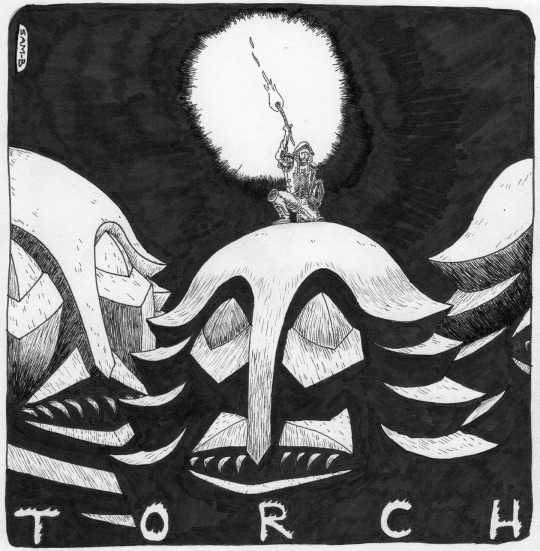
Cursed Relics 2022 drawing challenge pt 3 - “TORCH”
#torch#torchlight#drawing#drawing challenge#illustration#penart#fantasy art#subterranean#ancient#statues
5 notes
·
View notes
Text
Ough... Thinking about subterranean folk.
dnd Drow are garbage, I mean some good shit.
Mfs wearing living glow worms as jewelry. Their art being primarily textural as opposed to visual. Breeding giant mushrooms to use as wood. All their textiles are spider silk and worm silk. Fire is extremely taboo in less ventilated caves. Hnnnng. Maybe they adapted some type of echolocation... Maybe they communicate over long distances with high pitched sounds above the audible range of surface folk.
Bruh.
3 notes
·
View notes
Text

Hunter Black Page 334 - Welcome To The Noonday Moon
What I Said Then: "First off, have we EVER seen anyone smoking ANYTHING in this comic before? I found this a little jarring the first time I saw it (which is literally as I’m typing this…I need to go look at the latest batch of pages, I guess), but I’m that way every time I see one of my friends smoke for the first time. I’m always shocked that people do it. Also, I don’t know about anyone else, but I love the name, 'Noonday Moon.' That’s a thieves’ guild name I’ve had in my pocket for YEARS, but I’m pretty sure I never got to put it into any games."
What I'm Saying Now: It still looks weird to me, that guy smoking. RARELY do I hang around someone who smokes...even less now that I'm out of hospitality.
#fantasy#comics#noir#amwriting#independent comics#webcomic#hardboiled#revenge#magic#killer#cavern#subterranean#thieves' guild#daughter#crimelond
0 notes